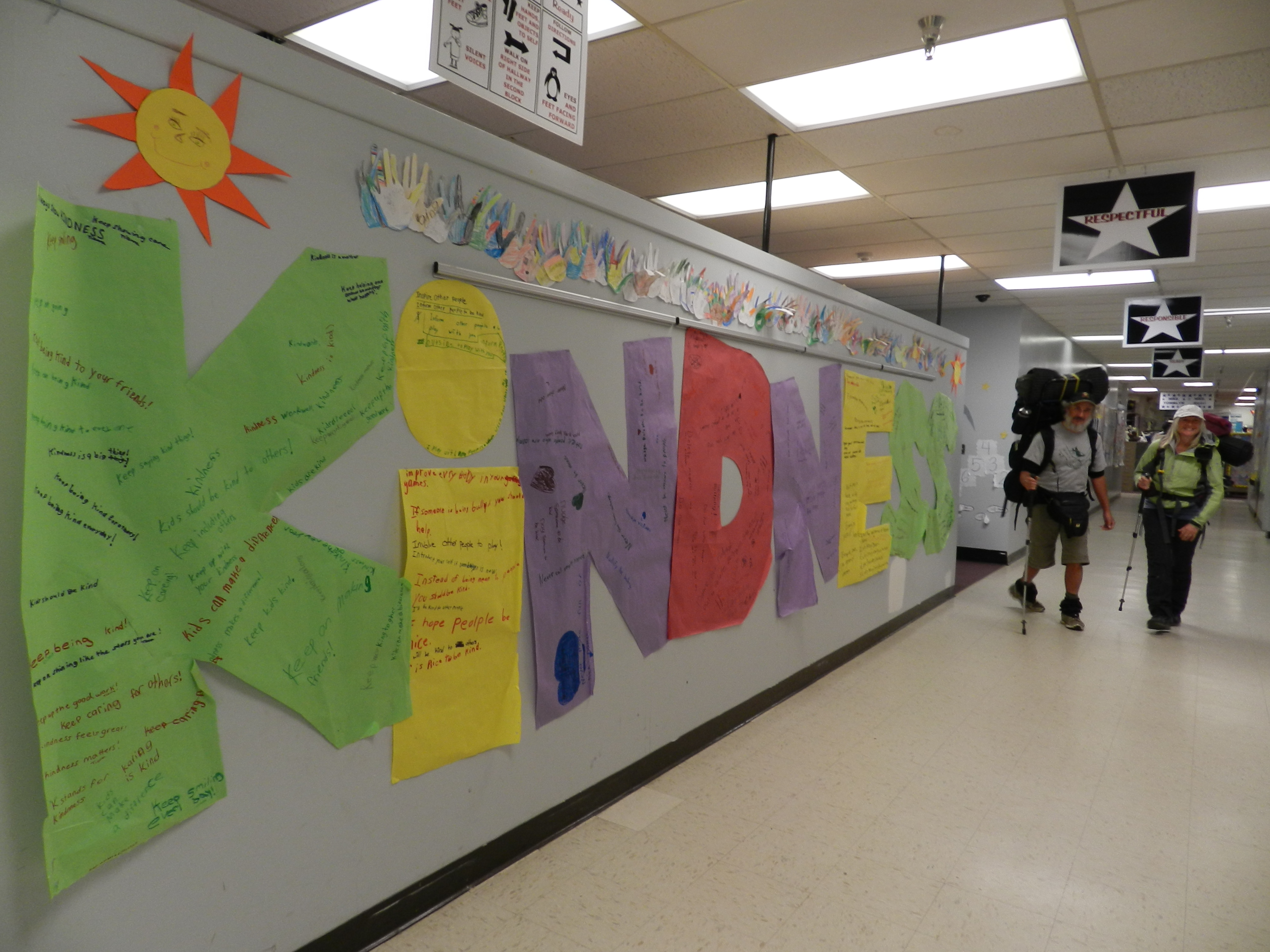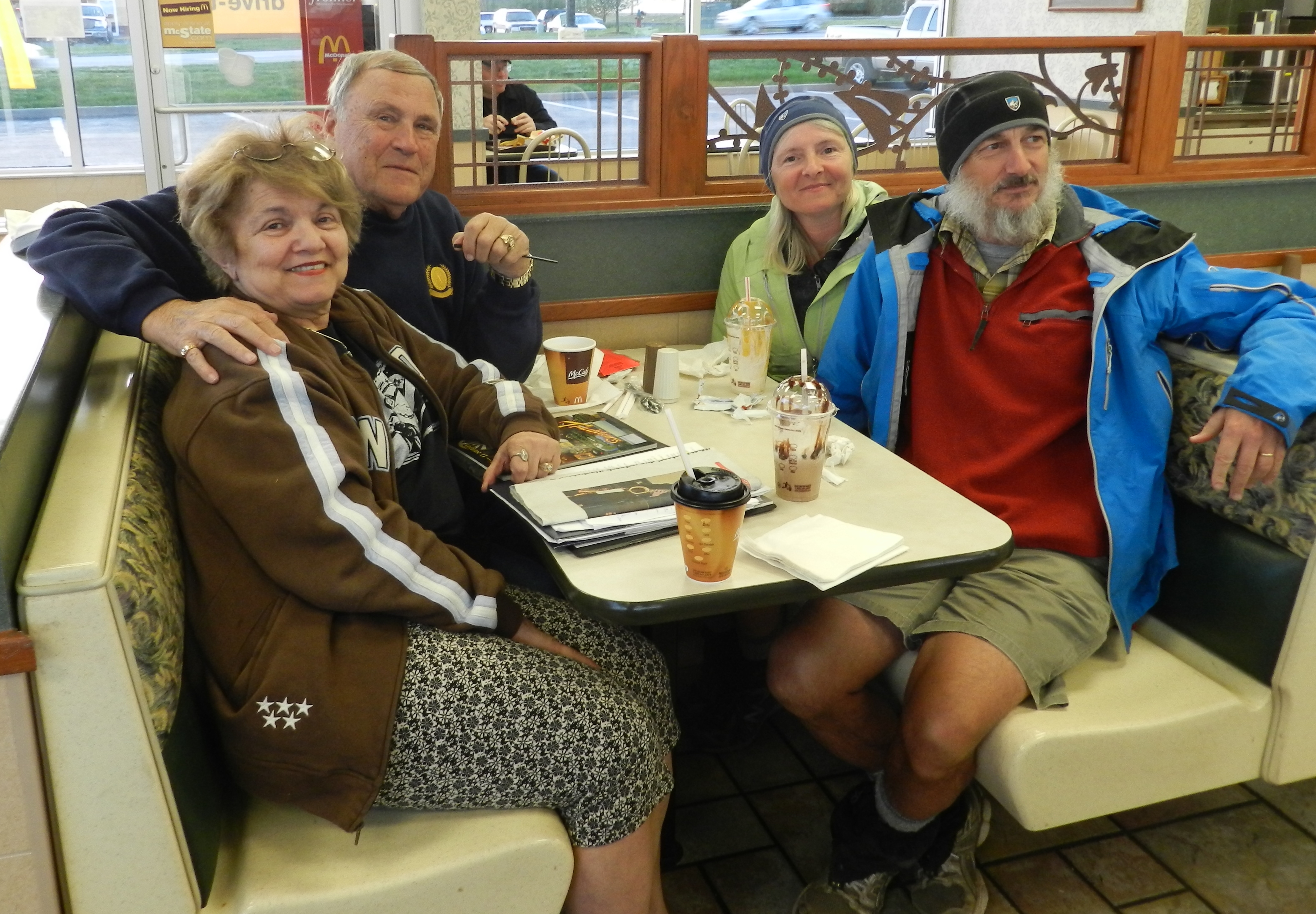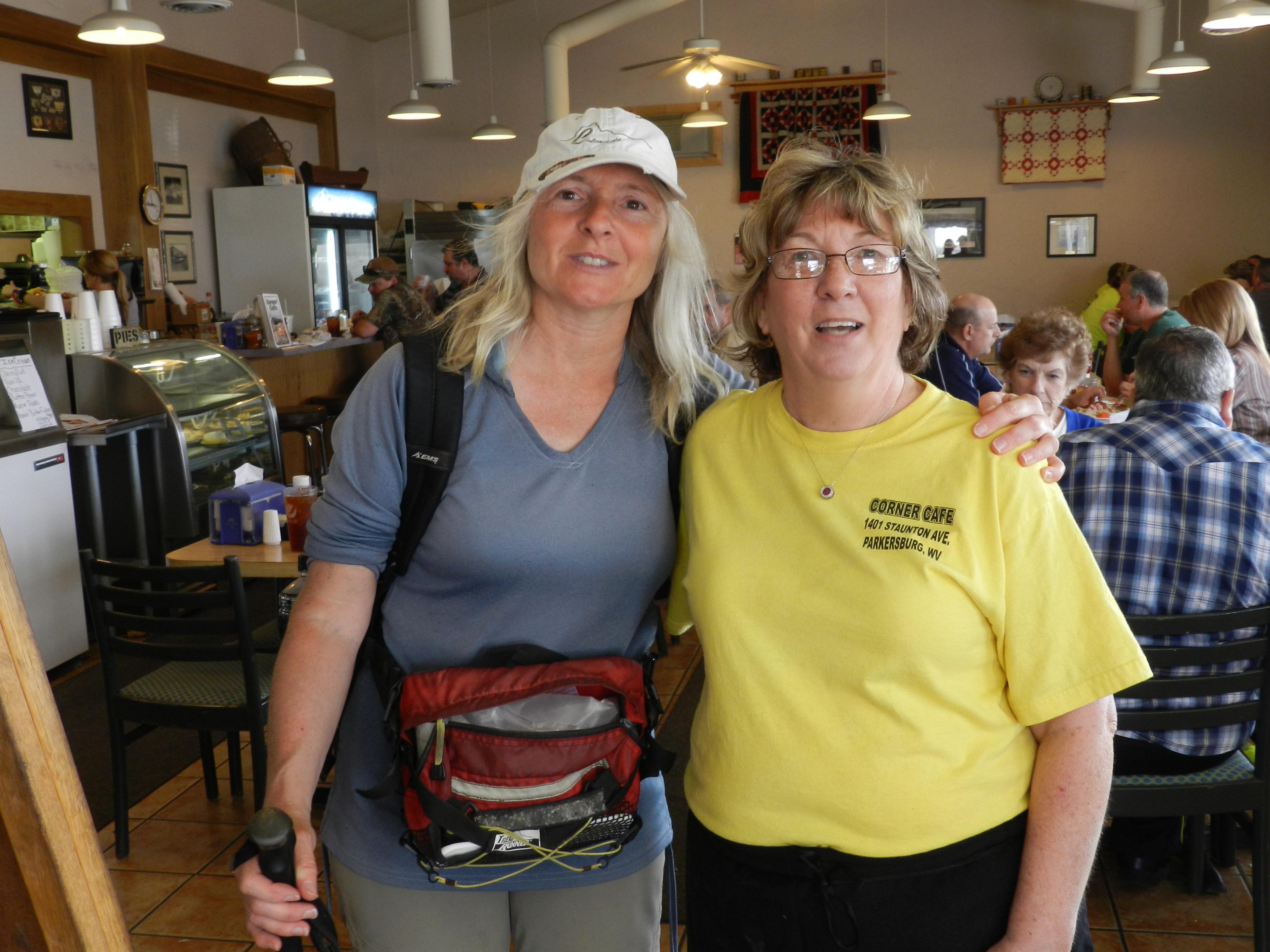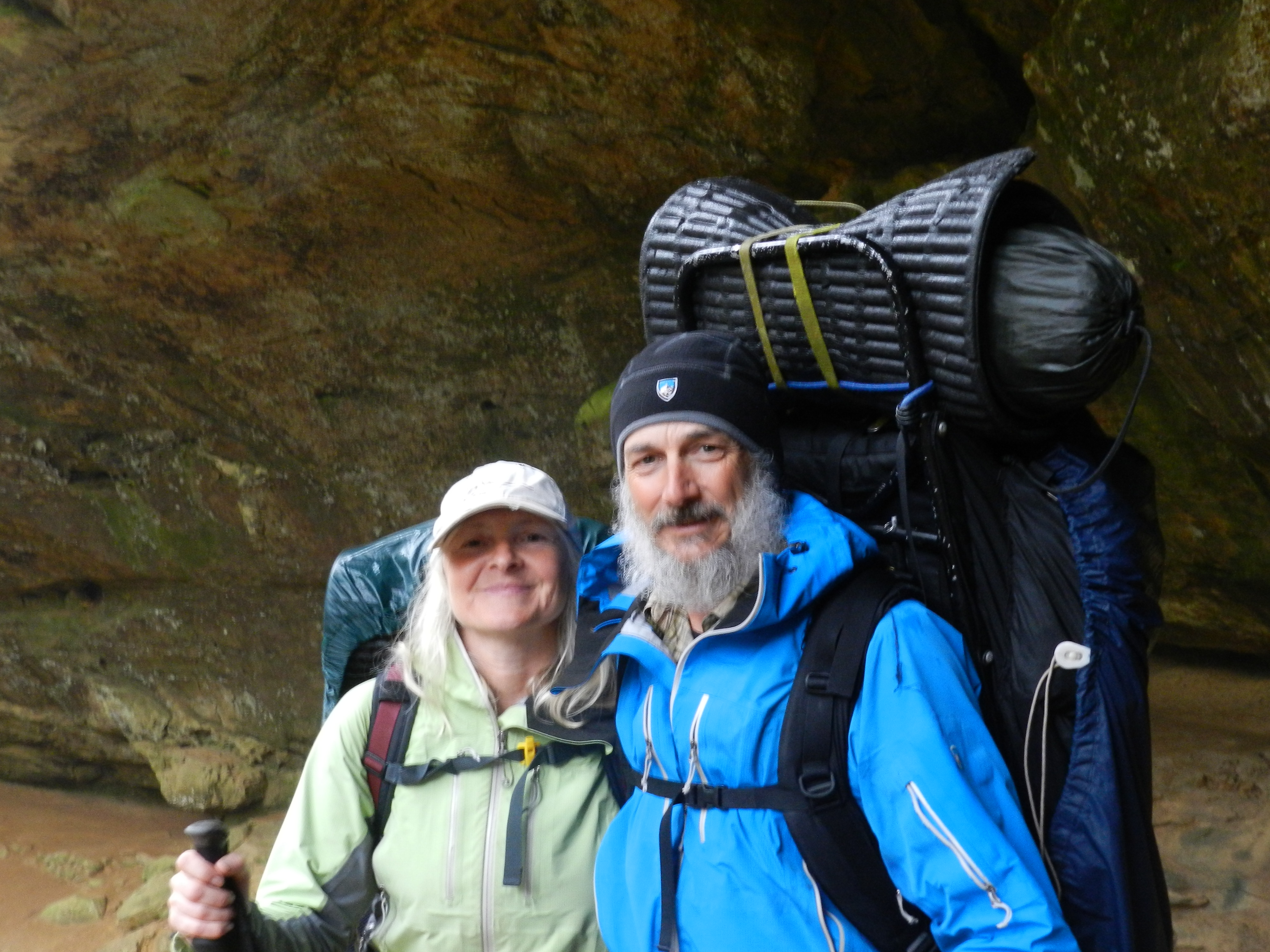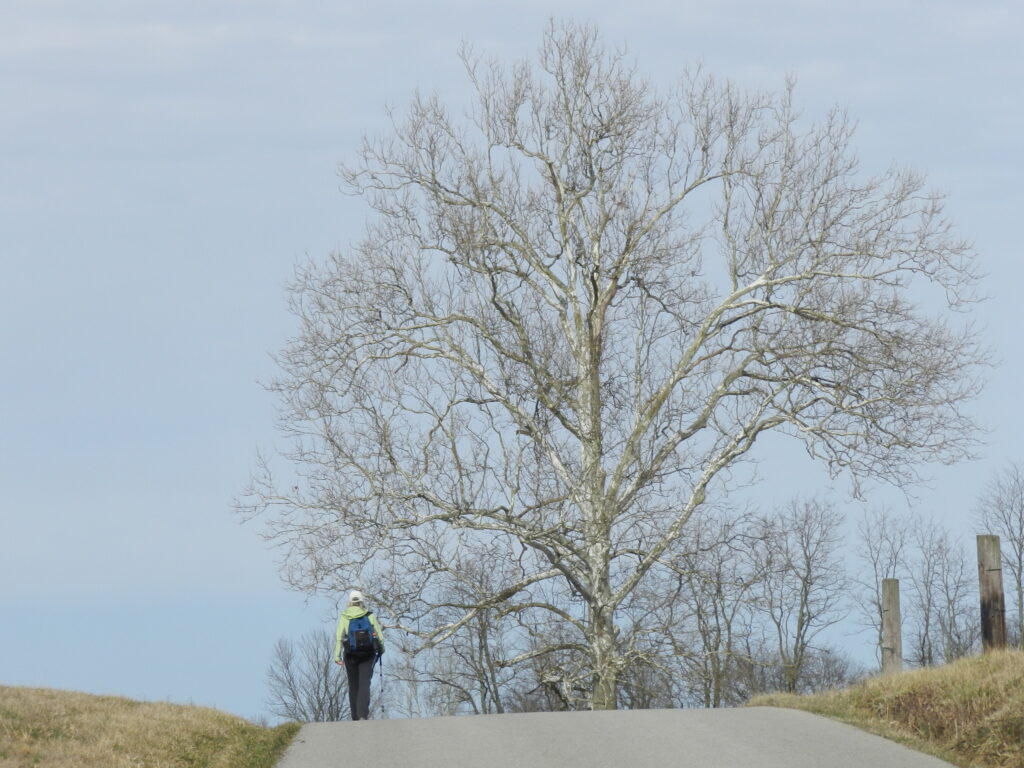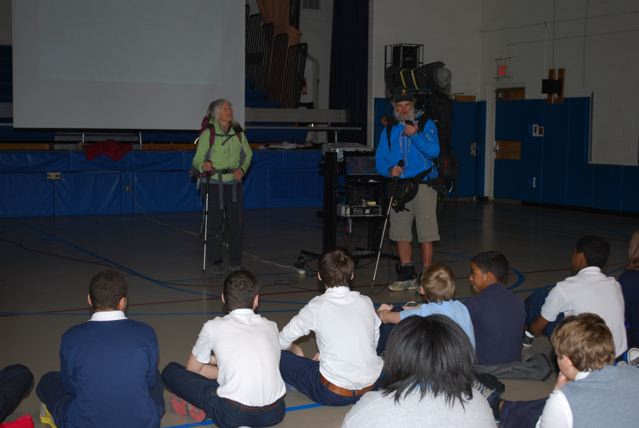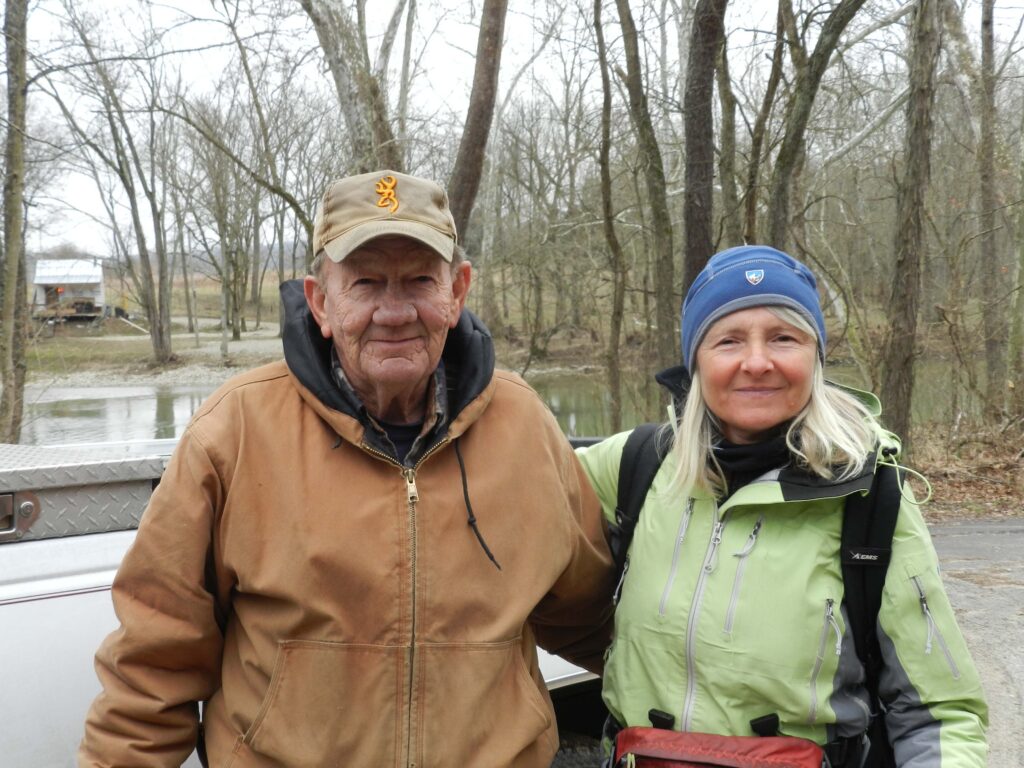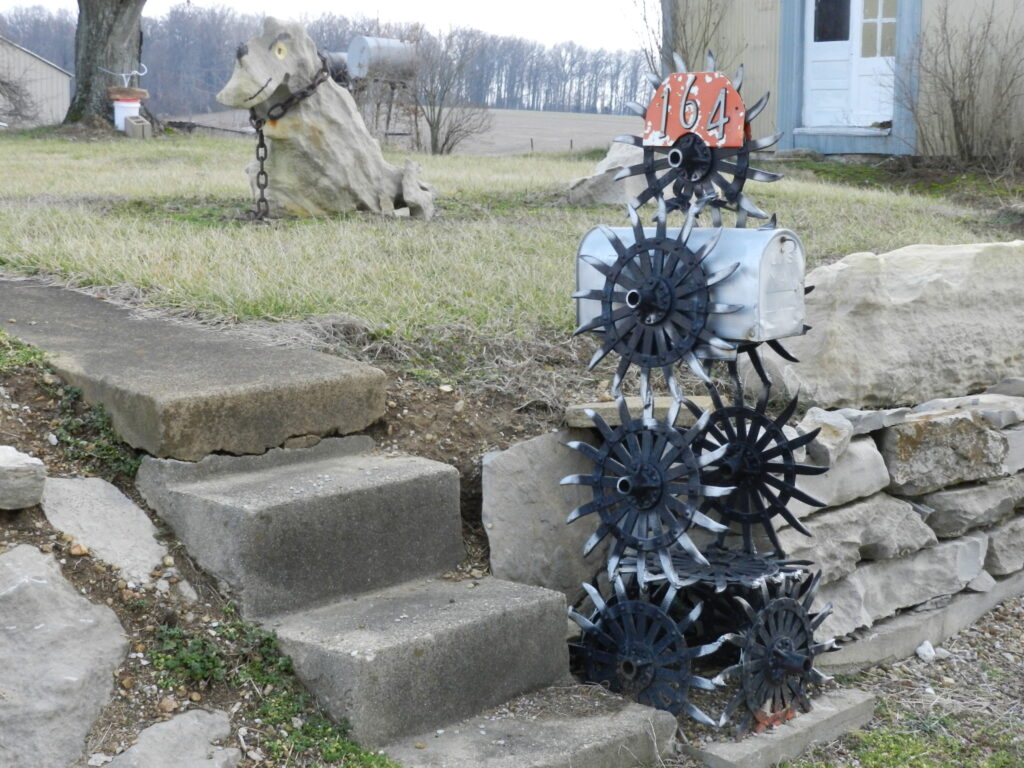Before parting from Gwen we treated her to breakfast at the Breakfast Nook, a special restaurant that helps young adults with previous dependency troubles become independent through work and mentoring. We chatted with mentors Keith Bishop and Tammy Robbins about the success of their approach and Gwen left intending to establish a connection between them and her college, Fairmont State.
After breakfast we hiked through the Canaan Valley National Wildlife Refuge and up into the Dolly Sods wilderness. Unfortunately, the higher elevation meant leaving blossoming spring behind, experiencing mainly late winter vegetation with a few spring buds. At least we hiked on well graded and easy to follow trail, unlike some of our wilderness experiences west of the Rockies.
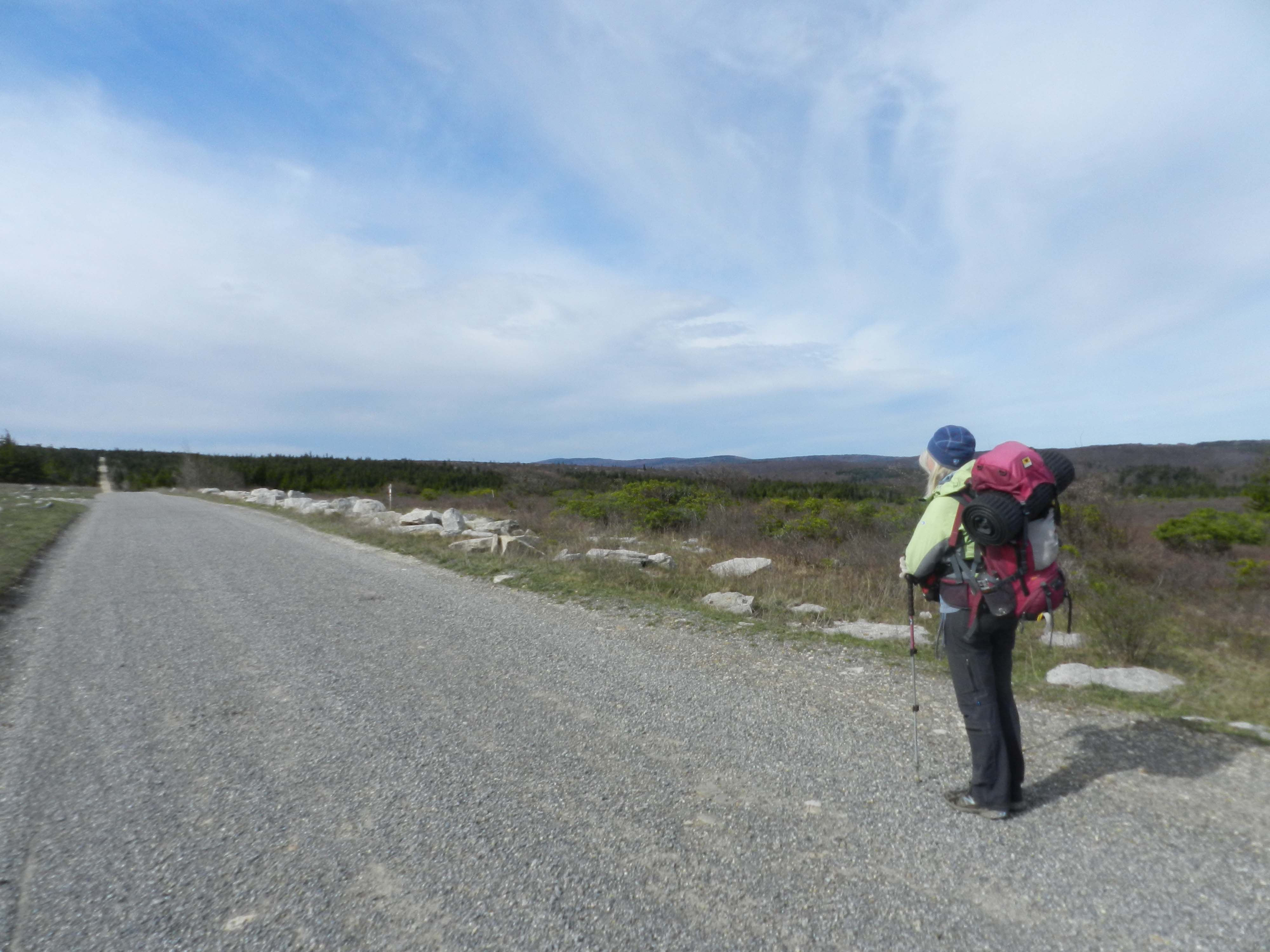
We encountered no other people in Dolly Sods, only a few bears that charged off once they spotted us. Bears in the wilderness avoid hikers, unless you are carrying food that is easy to smell. We package our food well, with our long distance, sweat soaked packs providing an extra deterrent.
Another potential problem with bears is getting between them and their cubs. I once spotted a black bear up ahead on the trail and stopped to take pictures. While I clicked away the bear got off the trail and headed in my direction. Once parallel with me on the trail, about 12 feet away, I noticed the two cubs up in a tree behind her. At that point the bear moved directly towards me and I responded by raising my arms and yelling at her. She stopped, apparently mulling over whether she should bother with a crazy person, and I headed on up the trail.
A touch of nostalgia hit as we knew Dolly Sods would be our last immersion into wilderness along the ADT. We stopped several times just to soak in the panoramic splendor. I fancied that Dolly Sods would be a fitting end to such a long journey, similar to finishing the Appalachian Trail on top of Mt. Katahdin. Yet I knew by now that fulfillment lies in the journey, not the destination. As the ADT continued beyond Dolly Sods, now mostly downhill to the Atlantic, so would the fulfillment of our journey.
Had our journey ended at Dolly Sods, we would have missed the next day of kindness coming out of that wilderness. Pastor Mike Humphrey spotted us walking by his home and invited us in for refreshments. He had hosted Jerry and Karen two years prior, ADT hikers whose names popped up repeatedly during our journey. He lamented not being able to host us (though I am not sure we would have ended our day that early), as his family was packing for a vacation even as they offered us snacks.
Mike called two of his parishioners who lived farther along our route to host us that evening. Thus towards the end of that day we found Leonard and Jeannie Carr doing yard work while keeping an eye out for us to arrive. We tented in their yard but went inside to join our hosts with supper, breakfast and, most importantly, kitchen table type conversation.
We followed surprisingly scenic Knobley Road north towards Maryland, at times along scenic streams, at times with landscape panoramas, always with the blossoming of spring in evidence. Small churches, quaint cemeteries, imaginative mailboxes, rustic barns and rural farmland once again dotted our route, as they did in Ohio. Ranches out west and agribusinesses across the heartland tend to be large, the rural parts of the east contrast starkly with decentralized and diverse agricultural endeavors, such as the Amish.
We occasionally met and chatted with people along Knobley Road, discovering from a chat with Don and Adam that impending school centralization threatened the rural local charm of the area. This was a phenomenon I studied in graduate school, based mainly on the research of Jonathan Scherr. Scherr found that the centralization of schools often increased education costs, contrary to what advocates have turned into conventional research. My own subsequent research uncovered that since school centralization first took off in the fifties and sixties the per student cost of education rose significantly over the ensuing decades.
The concern of Don and Adam was about community rather than costs. The local school is a hub of local activity bringing people in the community together. Taking away these local hubs, whether they are schools or post offices, reduces the amount of community interaction.
Another interesting conversation occurred with Roger and his son. They believed that humans were not nice, even as they went out of their way to chat with us, give us snacks and fill up our water bottles. This seemed to be a regional problem. People in the heartland prided themselves on community and kindness, even objecting slightly at the suggestion that another state may be just as kind. The farther east we traveled the more cynical people became of human nature, even while exhibiting their innate kindness.
Our last day in West Virginia occurred on Easter and much happened to make the day memorable. The evening before we wondered where to guerilla camp when a car with TJ Quesenberry and friends pulled over to ask what we were doing. TJ suggested we stay at her place, which was right along our route and just outside of Fort Ashby. Upon our arrival TJ and boyfriend Josh prepared some huge burgers with all the fixings for us. She also prepared us Easter breakfast the next morning. As if that was not enough she called her sister in Annapolis and arranged for us to stay with her as well when we got there.
We arrived early for the Easter service at the church. I once again got the opportunity to sing with the choir and once again choir members jokingly offered me a job if I stayed and continued singing with them. When I once again passed up the offer they gave us unsolicited donations.
As we neared the border we passed a family celebrating Easter with a picnic and egg hunt. We called out Happy Easter to them. Moments later two kids chased after us to give us some of their Easter candy. Once again this simple act of spontaneous kindness moved us more than the grander gestures experienced throughout the journey.
Gwen came out to meet us one last time at the border, before we left her state. She brought us gear we had stowed at her place while Ky was away. I first met Gwen as one of my Resident Assistants at a college dormitory where I was the Hall Director. She always remained one of the easiest persons for me to talk to, but I noticed now how at ease Cindy felt around her as well. Looking back now I am saddened to realize that was the last time Cindy spent with Gwen.
Once we crossed into Maryland we hiked east on the C&O towpath, now turned into a biking/hiking trail. For the first two days we encountered only three people; apparently trail users from the populated eastern portion of Maryland seldom come this far out west. We expected not to encounter people in Dolly Sods, but not encountering them on a bike trail in the height of spring gave the feel of a ghost town, or ghost trail if you will. The solitude of a wilderness area? Heavenly. The same solitude on a bike trail? Spooky. Thankfully, that changed once we reached Hancock.

